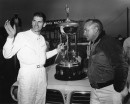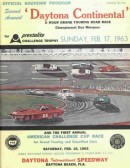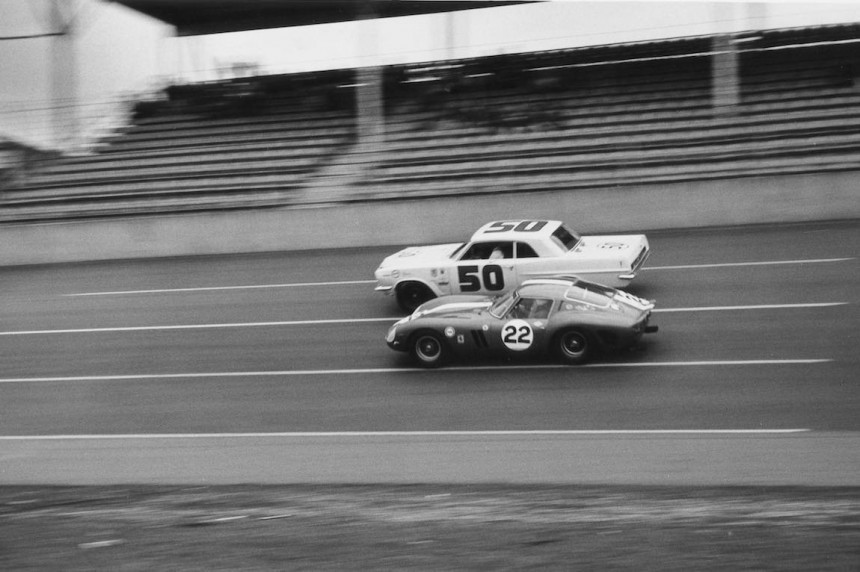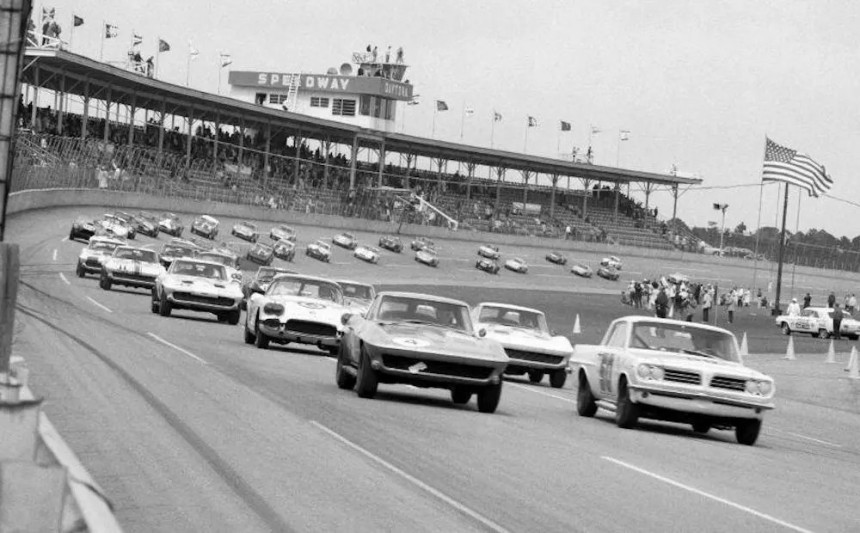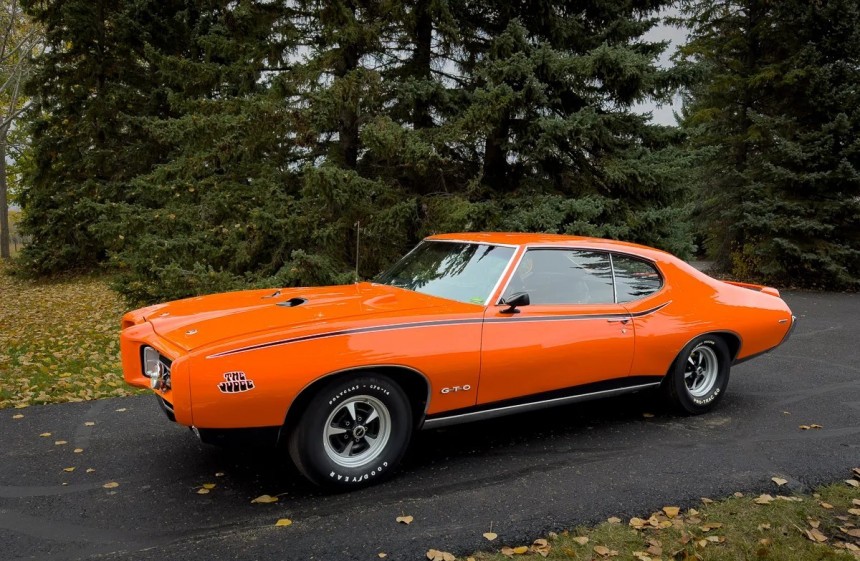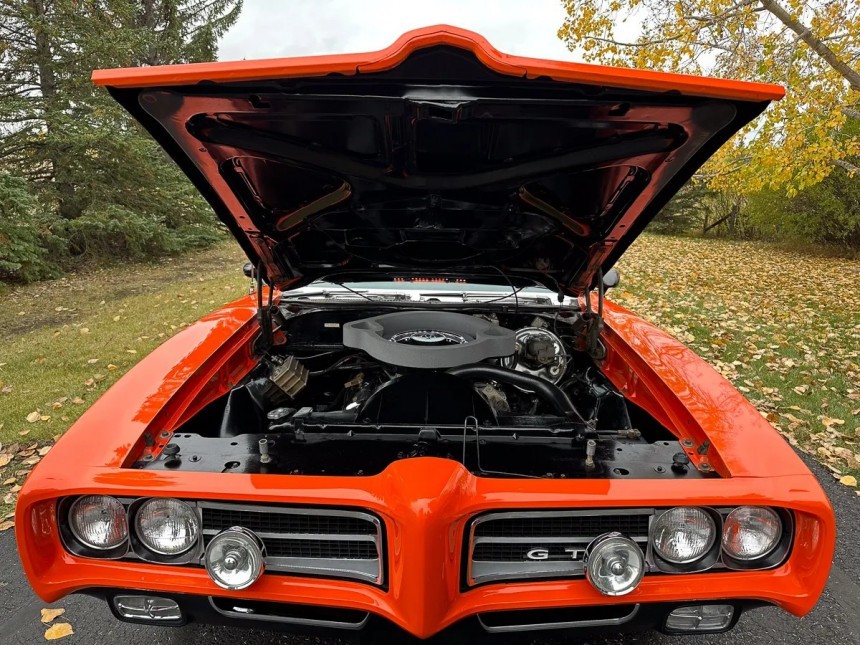Remember that moment when an option of an option of a trim level of a compact sedan became the quintessential muscle car of the sixties? That precise moment can be pinpointed to December 19, 1968, when Pontiac Motor Division announced ‘The Judge’ optional package for the GTO. As we are fully aware, the GTO started life on September 23, 1963, as a performance option for the Le Mans. And, since we are on a stroll down memory lane, let’s remember what the Le Mans was: a high-trim level for Pontiac’s first compact automobile, the Tempest.
Popular belief tends to give credit to the following version of the GTO naming fable: that it was a tribute elegantly paid to the Ferrari 250 Gran Turismo Omologato that won the 24-hour endurance race in ’62 and ’63. However, there is one variant that sits closer to Detroit’s heart – and to Pontiac’s most fabled model’s hardcore fans.
The GTO moniker stands for something more mundane in appearance but bearing a historical significance that is filled with Ferrari public shaming by a specific Pontiac automobile. The three letters were the abbreviation of ‘Grand Tempest Option,’ a name John DeLorean found pleasing for several reasons. Chief of which would be a certain 250-mile oval race at Daytona in February 1963.
The event was the first edition of the American Challenge Cup (better known by its other name, the NASCAR Challenge Cup) that was reserved for Grand Touring and Classified Cars that met one condition: the engine had to be smaller than 427.2 cubic inches of displacement, or below 7.0 liters, in Ferrari parlance.
Why Ferrari? Because that race was attended by not one, but two 250 GTOs. The rest of the starting grid consisted of a pack of eight Corvettes, four Porsche 356, and a Ferrari 4.9. Oh, yeah, and a Pontiac. A Super Duty Tempest Le Mans with the legendary 421-cube V8 in it. The 6.9-liter motor was one of a literal dozen engines that powered just as many specially built and heavily modified race Tempest Le Mans examples.
The story of that race is nothing short of a fairy tale: out of the 30 cars that signed in for the inaugural event, 16 qualified for the race. The others didn’t meet the 130-mph (209 kph) minimum qualifying speed limit and were left out. Two more contestants called quits on the morning of the race due to the downpour.
Rain and oval racetracks don’t usually go well together, but on February 16, 1963, that mismatch was overruled by 14 brave souls. Brave but clueless that it wouldn’t be a race but simply a General Motors parade. Paul Goldsmith and his Pontiac took the green, the lead, and the checkered flag without as much as breaking a sweat. The Tempest pulled ahead of everyone else in the first lap and stayed there for the remainder of the 250-mile race.
During the 100 laps of the Pontiac parade, the Super Duty lapped the runner-up twice and devastated the arrogant Ferraris by overtaking the better-ranked 250 GTO seven times. The other Maranello pride and joy had it worse, falling eight laps behind the one-car-show Tempest.
Whether the GTO nameplate was chosen to praise that premeditated Prancing Horse taillight-kicking race or it was a celebration of the Super Duty racer is one for historians. Pontiac’s head of marketing at the time, Jim Wangers, wrote in his autobiography ‘Glory Days’ how the second-generation Tempest – launched in 1963 for the 1964 model year – came with a big-block option. The grand motor deserved a ‘Grand’ name. Since it was a Tempest-only offer, the Grand Tempest Option came about, and the GTO was born.
In short, offering a 389-cube V8 (6.4-liter) from the full-sized Catalina as an alternate engine on the now-mid-sized Tempest Le Mans resulted in what is generally accepted as the first muscle car. For two years, the GTO was an option for the high-end Tempest. In 1966, it became a separate model, and in 1969, with the whole of Detroit biting increasingly larger chunks of the muscle car pie, Pontiac retaliated.
It offered another optional performance package – The Judge. Initially, it was meant to be a low-cost, low-trim variant of the high-performance GTO. If the recipe sounds familiar, it’s only a Road Runner coincidence. Plymouth stole the show in ’68 with the no-frills, all-thrills offer, and Pontiac thought it was a good idea. The Judge should have been precisely that – an affordable alternative for young hotheads.
It ended up being more expensive than the model it was based on, despite coming in only one color – confusingly called Carousel Red, despite being a beyond-doubt orange hue. As for power, the V8 was the 400 Ram Air, colloquially known as the Ram Air III. Rated at 366 hp and 445 lb-ft (371 PS, 603 Nm), the 400-cubic-inch (6.6 liters, or, in Pontiac’s scripting, 6.6-Litre) drew fresh air via a functional pair of hood scoops bulging over the engine.
A third hump of the hood was the tachometer housing – one of the coolest features ever installed on Detroit products since the wheel was invented. Another equally cool installment was the 3.90 rear – one of the most applauded GTO pieces of equipment, mainly by the tire-making companies. With the rubber-sublimating gears, the GTO earnestly became translated as ‘Gas, Tires, Oil’ by the model’s loyalists.
In 1969, that fan base accounted for exactly 6,833 piston addicts – that’s how many ordered a new GTO Judge. How many are still devoted to their creed from 54 years ago is a mystery, but one stayed faithful to the Judge until judgment day arrived. On June 6, 1969, one example of a Pontiac GTO Judge made its way to its buyer, a lady from Edmonton, Canada. The good fortunes smiled upon the two on that day, and the car and owner stayed together until the lady went to tell the angels what it’s like to command a Judge.
The woman opted for the tamer 3.55 rear with Positraction and a Muncie four-speed (the wide-ratio, not the Rock Crusher). The staggered wheels have power disc brakes on the front, and power steering made the Judge easier to turn around. The mighty GTO still has its original engine, tranny, rear, and body.
The car was repainted once in the mid-70s, and this year, it received a new fuel assembly (tank, pump, lines, and filter); it is now offered for sale, and the current bid sits at $57,500. It comes with complete documentation from day one to account for every one of the 62,200 miles on its clock (100,000 km).
The GTO moniker stands for something more mundane in appearance but bearing a historical significance that is filled with Ferrari public shaming by a specific Pontiac automobile. The three letters were the abbreviation of ‘Grand Tempest Option,’ a name John DeLorean found pleasing for several reasons. Chief of which would be a certain 250-mile oval race at Daytona in February 1963.
The event was the first edition of the American Challenge Cup (better known by its other name, the NASCAR Challenge Cup) that was reserved for Grand Touring and Classified Cars that met one condition: the engine had to be smaller than 427.2 cubic inches of displacement, or below 7.0 liters, in Ferrari parlance.
The story of that race is nothing short of a fairy tale: out of the 30 cars that signed in for the inaugural event, 16 qualified for the race. The others didn’t meet the 130-mph (209 kph) minimum qualifying speed limit and were left out. Two more contestants called quits on the morning of the race due to the downpour.
Rain and oval racetracks don’t usually go well together, but on February 16, 1963, that mismatch was overruled by 14 brave souls. Brave but clueless that it wouldn’t be a race but simply a General Motors parade. Paul Goldsmith and his Pontiac took the green, the lead, and the checkered flag without as much as breaking a sweat. The Tempest pulled ahead of everyone else in the first lap and stayed there for the remainder of the 250-mile race.
Whether the GTO nameplate was chosen to praise that premeditated Prancing Horse taillight-kicking race or it was a celebration of the Super Duty racer is one for historians. Pontiac’s head of marketing at the time, Jim Wangers, wrote in his autobiography ‘Glory Days’ how the second-generation Tempest – launched in 1963 for the 1964 model year – came with a big-block option. The grand motor deserved a ‘Grand’ name. Since it was a Tempest-only offer, the Grand Tempest Option came about, and the GTO was born.
In short, offering a 389-cube V8 (6.4-liter) from the full-sized Catalina as an alternate engine on the now-mid-sized Tempest Le Mans resulted in what is generally accepted as the first muscle car. For two years, the GTO was an option for the high-end Tempest. In 1966, it became a separate model, and in 1969, with the whole of Detroit biting increasingly larger chunks of the muscle car pie, Pontiac retaliated.
It ended up being more expensive than the model it was based on, despite coming in only one color – confusingly called Carousel Red, despite being a beyond-doubt orange hue. As for power, the V8 was the 400 Ram Air, colloquially known as the Ram Air III. Rated at 366 hp and 445 lb-ft (371 PS, 603 Nm), the 400-cubic-inch (6.6 liters, or, in Pontiac’s scripting, 6.6-Litre) drew fresh air via a functional pair of hood scoops bulging over the engine.
A third hump of the hood was the tachometer housing – one of the coolest features ever installed on Detroit products since the wheel was invented. Another equally cool installment was the 3.90 rear – one of the most applauded GTO pieces of equipment, mainly by the tire-making companies. With the rubber-sublimating gears, the GTO earnestly became translated as ‘Gas, Tires, Oil’ by the model’s loyalists.
The woman opted for the tamer 3.55 rear with Positraction and a Muncie four-speed (the wide-ratio, not the Rock Crusher). The staggered wheels have power disc brakes on the front, and power steering made the Judge easier to turn around. The mighty GTO still has its original engine, tranny, rear, and body.
The car was repainted once in the mid-70s, and this year, it received a new fuel assembly (tank, pump, lines, and filter); it is now offered for sale, and the current bid sits at $57,500. It comes with complete documentation from day one to account for every one of the 62,200 miles on its clock (100,000 km).









































